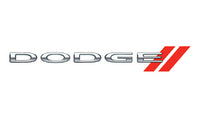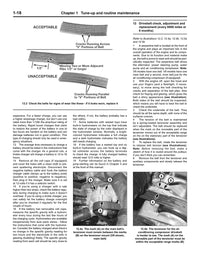Aerodynamics is, as we all know, the study of airflow around your car. The smoother the airflow, the lower the drag and the less fuel you burn at a specific speed.
Aerodynamic drag comes from a variety of sources, and that line about waxing your car isn’t just a joke.
‘Skin friction’ as air passes over a surface is a real phenomenon, and while it may not be as significant as other factors like turbulence and pressure differences, it all adds up.
This is why car makers are so keen to develop their vehicles’ aerodynamic efficiency, because it means they can achieve better gas mileage figures and sell more cars. Oh, and save the planet too, of course.
It’s also a lot cheaper for makers to improve efficiency with aerodynamics than by expensive weight saving or costly engine technologies.
Cd and what it means
Cd stands for coefficient of drag and it’s the figure that car makers publish to tell you how efficient their vehicles are. It’s a measure of how ‘slippery’ the vehicle is as it passes through the air.
It’s not quite what it seems, though, because it doesn’t actually tell you how much aerodynamic drag that vehicle produces – at least not directly.
The calculation for aerodynamic drag is a little more complex:
Aerodynamic drag = Frontal Area x drag coefficient (Cd) x Air density x Speed squared
Frontal area: this depends mostly on the class and type of car, and there’s often nothing to be done about this. A luxury saloon will always have a frontal area larger than a supermini.
The two vehicles might have the same Cd figure, but the luxury saloon will produce more aerodynamic drag.
Air density: well there’s not much to be done about this. You can’t just drive somewhere different or travel on a different day.
Speed squared: this is the interesting one, so we’ll take a closer look.
Speed burns fuel
Try pushing a car and you’ll quickly figure that friction and the rolling resistance of the tires burns up a whole lot of energy. If you’re having trouble pushing the thing at three miles per hour, how much energy does it use to move a vehicle at 30mph?
Quite true. At urban speeds, friction and rolling resistance are responsible for most of the fuel burned and aerodynamic drag isn’t a big factor.
But these frictional forces are linear. Travelling at 60mph requires no more than twice the energy as travelling at 30mph. Aerodynamic drag is different, increasing in proportion to the square of the speed.
This means that at freeway speeds the frictional drag is no longer the main gas guzzler – aerodynamic drag will now account for more half of the fuel you’re using, or even more. The faster you go, the more fuel you use pushing your car through the air.
How car makers improve aerodynamic efficiency
Improved aerodynamics won’t halve your vehicle’s fuel consumption overnight, but a single design change could reduce your fuel consumption by 0.1mpg, for example, so the savings can quickly add up.
Here are a few of the things makers do to improve the airflow, some of them surprising.
- Rounded edges at the front of the vehicle – sharp corners and edges increase turbulence and drag, smooth edges reduce it
- Grill openings optimised to reduce turbulence both outside the car and under the hood – some makers have even experimented with adjustable grill slats
- Aerodynamic wheel shapes – the 2013 Ford Atlas pickup concept vehicle had active wheel shutters that closed at higher speeds to seal the gaps between spokes and reduce turbulence
- Spats or spoilers in front of the tyres
- Carefully shaped outside mirrors and mounts
- Aerodynamically optimized water channels on A-pillars – yes, really
- Air dams to reduce drag under the vehicle
- Side skirts to control airflow under the car
- Rear spoilers to reduce lift
- Carefully calculated rear window angles
- Rear diffuser to control air coming off the vehicle underside
- Belly pans to smooth airflow under the vehicle
Makers have also experimented with ‘active’ aerodynamic controls that operate as the speed increases, including lowering air dams, pop-up rear spoilers and lowered ride height.
What’s bad for drag
Pickups have both a larger frontal area and a poorer drag coefficient in the range of Cd 0.4-0.45. SUVs are better, but still typically manage only Cd 0.35-0.4.
Regular cars are the most efficient, generally in the range Cd 0.3-0.35, though an increasing number, mostly in the prestige sector, get well below Cd 0.3.
Roof racks, not surprisingly, have a bad impact on aerodynamics, and uncovered beds on pickup trucks – a tonneau cover can make a surprisingly big difference to the aerodynamic efficiency here.
Open windows are bad – you should close windows and use the vehicle’s aircon instead.
Performance accessories are bad news too. Wider tires will increase aerodynamic drag, and while factory-fitted diffusers, air dams and rear spoilers may be designed to smoothe airflow and reduce turbulence and lift, many sports accessories are designed instead to increase downforce, which is an entirely different thing.
Downforce and aerodynamic efficiency are mortal enemies – ask any Formula One team. Aerodynamic efficiency is a big factor in reducing costs, both for the individual and the environment.
So if you’ve got a broken air dam or diffuser, fix it. If you’ve got a roof rack, just fit it for your vacation and take it off when you get back.
What we don’t have, however, is any hard and fast evidence that waxing your car will mean it uses less fuel – but it will look nice.


























